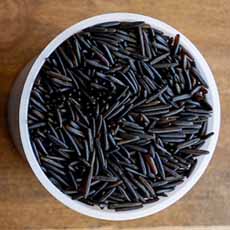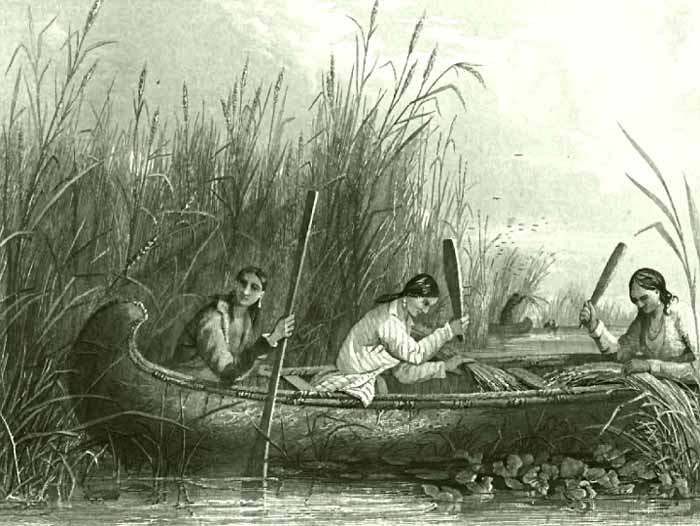FOOD 101: Wild Rice For National Wild Rice Week
|
The fourth week in September is National Wild Rice Week. Did you know that wild rice isn’t rice? Wild rice is a member of the Poaceae family, genus Zizania; it is a cousin to true rice, the genus Oryza. Like Orzya, it grows in in shallow water. Instead of being cultivated in paddies, as the name indicates, it grows wild in small lakes and slow-flowing streams. There are four species of wild rice, three native to North America. Called manoomin by the local Chippewa, wild rice is a protected crop that can be harvested only by state residents holding a valid license. In the Great Lakes region, the rice is harvested by hand, by the Chippewa natives. Paddling in canoes (or propelling with push poles—illustration #3, below), they use the traditional instruments, wooden flails, to make the grains fall from the stalks. Wild rice is high in protein for a grain, second only to oats in protein content. Like true rice, it does not contain gluten. Wild rice is also a good source of minerals and *vitamins, the amino acid lysine and dietary fiber. It low in fat. While some recipes and store rice mixes combine wild rice with other versions (white rice, brown rice), this is to keep the cost down. It prevents you from enjoying the joy of wild rice. |
 [1] Wild rice, not a member of the rice genus but a first cousin (photo courtesy Tocabe Native American Restaurant).
|
|
|
Wild rice takes longer to cook than white rice, but wild rice delivers a complex, nutty flavor profile that can be the star of the plate. Wild Rice Vs. Brown Rice Cooked wild rice has about 30% fewer calories than brown rice and 40% more protein. It also contains more fibre, potassium and zinc. So treat yourself: Spring for a bag and make this recipe, courtesy of The New York Times. Wild rice can substitute for potatoes or grains, and is used in a wide variety of foods such as dressings/stuffings, casseroles, salads, soups, even desserts. Here are some wild rice recipe collections to peruse: > The history of rice. ________________ *One cup of cooked wild rice provides 5% or more of the daily value of iron, and potassium, riboflavin and thiamin; 10% or more of the daily value of B6, folate, magnesium, niacin and phosphorus; 15% of zinc; and more than 20% of manganese. CHECK OUT WHAT’S HAPPENING ON OUR HOME PAGE, THENIBBLE.COM. |
||




